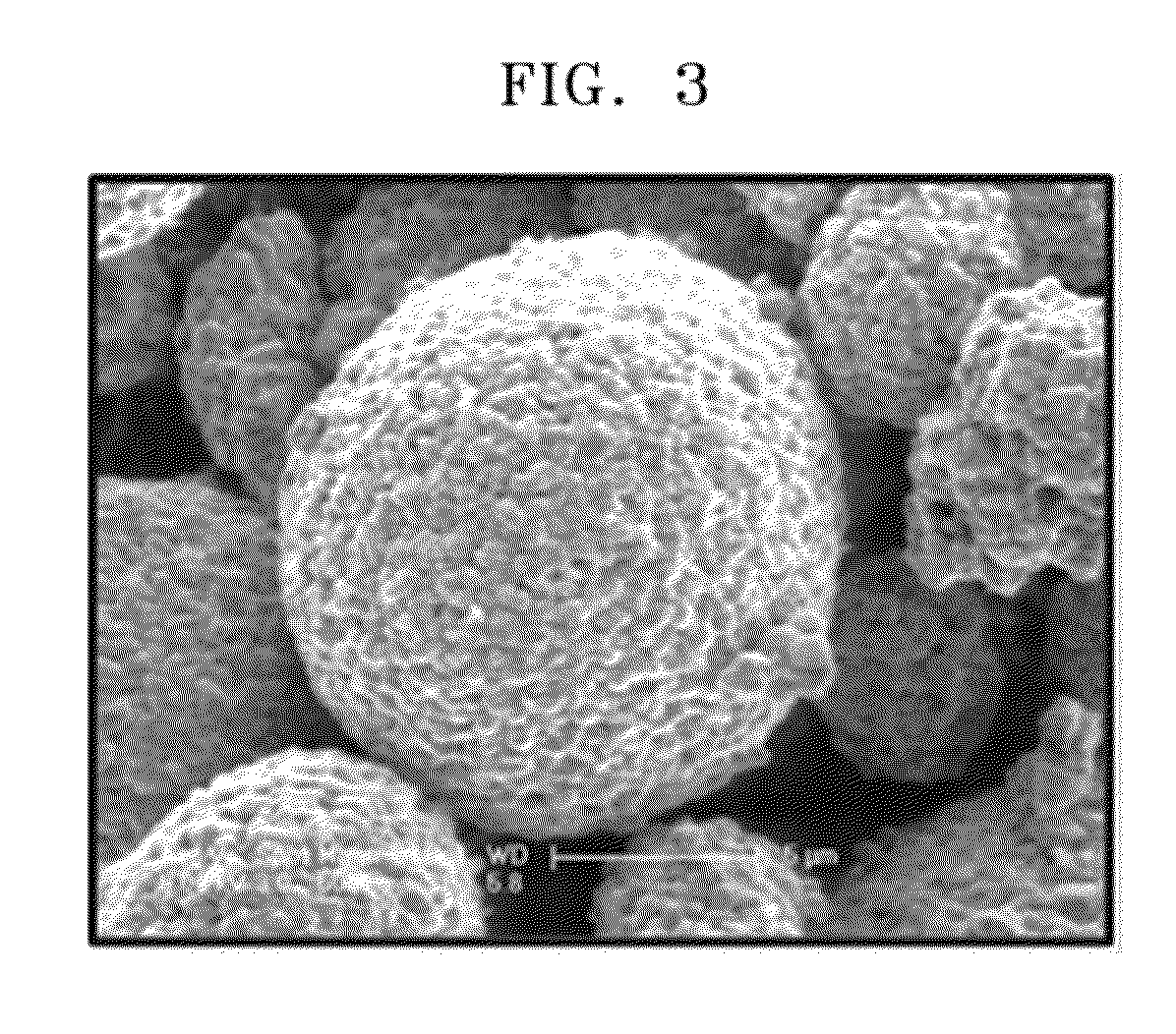Positive active material, preparing method thereof, positive electrode for lithium secondary battery including the same, and lithium secondary battery employing the same
a lithium secondary battery and active material technology, applied in the field of positive active materials, can solve problems such as deterioration of lifespan properties, and achieve the effects of reducing gas generation, reducing the amount of li-containing impurities, and improving lifespan properties
- Summary
- Abstract
- Description
- Claims
- Application Information
AI Technical Summary
Benefits of technology
Problems solved by technology
Method used
Image
Examples
example 4
A Positive Active Material Including a Coating Layer Coated with LiF on a Surface of a Lithium Transition Metal Composite Oxide Core
[0117]NiSO4, CoSO4, and MnSO4 were dissolved in distilled water at a molar ratio of 0.66 moles, 0.22 moles, and 0.12 moles, respectively, to prepare a 2.5 M NiSO4.xH2O (x=6−7) solution, a 2.5 M CoSO4.xH2O (x=7) solution, and a 2.5 M MnSO4.H2O solution. In a reactor, the NiSO4.xH2O (x=6−7) solution, the CoSO4.xH2O (x=7) solution, and the MnSO4.H2O solution were mixed to obtain a mixture solution. Then, in a constant temperature bath at a temperature of 45° C., a 6 M sodium hydroxide aqueous solution and a suitable amount of ammonia water were added to the mixture solution and then stirred at a speed of 600 rpm, and then stirred at pH 11.2 for 8 hours to obtain co-precipitation products. The co-precipitation products were washed and dried. The dried co-precipitation products were mixed with Li2CO3 at a molar ratio of 1:1, which was then heated in an air a...
example 5
[0122]The positive active material of Example 1, polyvinylidene fluoride, and Ketjen black powder as a conductor were mixed at a ratio of 92:4:4 in N-methyl pyrrolidone to prepare a positive active material slurry. The positive active material slurry was coated on an aluminum foil having a thickness of 12 μm by using doctor blade method and then dried to manufacture a positive electrode plate, which was further vacuum dried to manufacture a coin type half cell having a diameter of about 14 mm.
[0123]When manufacturing a cell, lithium metal was used as a counter electrode, a microporous polypropylene separator was used as a separator (Celgard 3501), and 1.3M LiPF6 dissolved in a mixture solution of ethylene carbonate:diethylene carbonate (EC:DEC) (at a volume ratio of 3:7) was used as an electrolyte.
examples 6 to 8
[0124]A coin type half cell was manufactured in the same manner as in Example 5, except that the positive active materials of Examples 2 to 4 were used instead of the positive active material of Example 1.
PUM
| Property | Measurement | Unit |
|---|---|---|
| thickness | aaaaa | aaaaa |
| average diameter | aaaaa | aaaaa |
| temperature | aaaaa | aaaaa |
Abstract
Description
Claims
Application Information
 Login to View More
Login to View More - R&D
- Intellectual Property
- Life Sciences
- Materials
- Tech Scout
- Unparalleled Data Quality
- Higher Quality Content
- 60% Fewer Hallucinations
Browse by: Latest US Patents, China's latest patents, Technical Efficacy Thesaurus, Application Domain, Technology Topic, Popular Technical Reports.
© 2025 PatSnap. All rights reserved.Legal|Privacy policy|Modern Slavery Act Transparency Statement|Sitemap|About US| Contact US: help@patsnap.com



